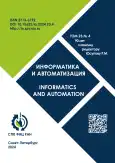The DNA sequencer "Nanofor SPS", developed at the Institute of Analytical Instrumentation of the Russian Academy of Sciences, implements a method for massively parallel sequencing to decrypt the sequence of nucleic acids. This method allows for the determination of the nucleotide sequence in DNA or RNA, containing from several hundred to hundreds of millions of bases. Thus, there is the opportunity to obtain detailed information about the genome of various biological entities, including humans, animals, and plants. A crucial part of this device is the software, without which it is impossible to solve genome decoding tasks. The output data of optical detection in the sequencer are a set of images over four channels, corresponding to nucleotide types: A, C, G, T. Through specialized software, the position of molecular clusters and their intensity characteristics, along with parameters of the surrounding background, are determined. Algorithms and programs for processing fluorescence signals, discussed in the paper, were developed during the creation of the device software. Also, to debug and test the working programs, models of image construction similar to real data obtained in the course of sequencer operation were created. These models made it possible to obtain a significant amount of information without running expensive experiments. Significant progress has been made in the field of machine learning in recent years, including in the field of bioinformatics, leading to the implementation of the most common models and their potential for practical tasks. However, while these methods have amply proven their worth in secondary bioinformatics data analysis, their potential for the primary analysis remains untapped. This paper focuses on the development and implementation of machine learning methods for primary analysis of optical images of fluorescence signals in reaction cells. The methods of clustering and their testing on models and images obtained from the device are described. The aim of this paper is to demonstrate the capabilities of algorithms for primary analysis of fluorescence signals that arise during sequencing in the «Nanofor SPS» device. The paper describes the main tasks of fluorescence signal analysis and compares traditional methods of solving them and solutions using machine learning technologies.
 953-968
953-968


 969-988
969-988


 989-1021
989-1021


 1022-1046
1022-1046


 1047-1076
1047-1076


 1077-1109
1077-1109


 1110-1138
1110-1138


 1139-1172
1139-1172


 1173-1198
1173-1198


 1199-1220
1199-1220


 1221-1245
1221-1245


 1246-1276
1246-1276











